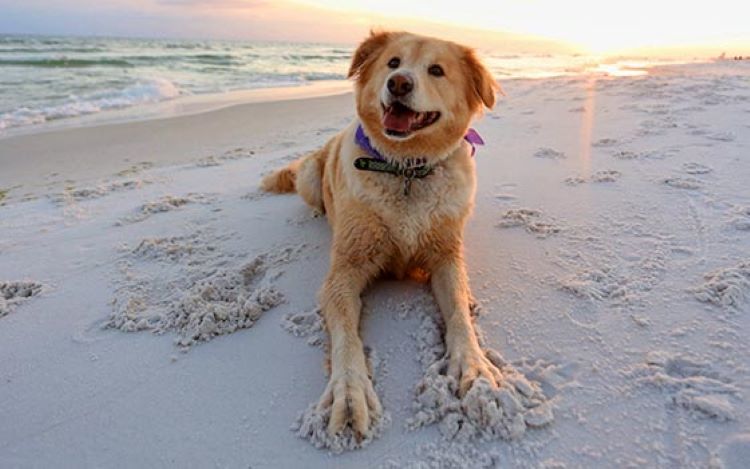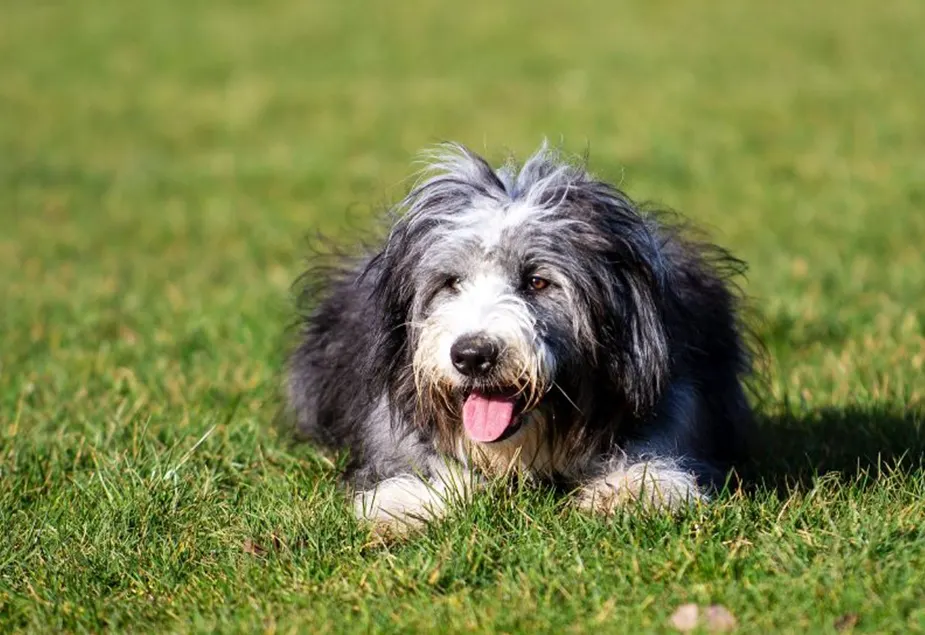Ready to help treat your pet to a healthy life?
Safety Tips All Pet Owners Need to Know for Summer 2025
By : Trupanion Staff | Updated May 22, 2025

Summer 2025 is finally upon us! And like many pet owners, you're probably excited for all the new adventures and activities it means for you and your pal. Yes, the season for outdoor fun is here, but with it comes several reasons to be proactive with pet care. After all, the last thing you want is for an emergency trip to the animal hospital to ruin an otherwise chill weekend in the sun or a vacation you've been waiting all year for.
Having a good pet insurance plan is always a good idea for the various illnesses and accidents that can affect dogs and cats when we least expect it this summer. Of course, prevention is always best, and it all starts with knowing the common dangers to pets that come with warmer weather.
Recognizing summer dangers to pets
The Farmers' Almanac predicts that Summer 2025 will be hot and sweltering across most of the United States and Canada, with predictions that heat records could be broken. These predictions could always change, of course, but it's always a good idea to check the weather routinely for the sake of your pet. Dogs and cats don't sweat like humans do, and their fur coats can make even slighter rises in temperature difficult to deal with on their own.
In addition to heat, other common summer dangers for pets include:
- Parasites — while a risk year-round, they tend to thrive in the warmer months,
- Grass awns — If inhaled or eaten, grass awns or "foxtails" can cause damage to pets' internal organs and may require emergency veterinary care.
- Hot cars — It doesn't have to be that hot for temperature in cars to become fatal.
Essential summer safety tips for dog and cat owners
Though the various seasonal dangers to dogs and cats may seem scary, practicing good summer safety for pets doesn’t have to be complicated or difficult. To help you out, we spoke with Dr. Caroline Wilde, DVM, about pet safety this season. Here are several key tips to help you address potential pet concerns as the summer fun unfolds.
1. Help pets relax during summer celebrations
As many pet lovers know, the pops and crackles of fireworks can really stress out pets and cause unnecessary levels of anxiety. Even if the whole family is outside enjoying the celebrations, keep in mind that this is one situation where pets may be better off not being included. To help relax your dog, exercise them beforehand, keep them indoors, close windows and doors, and create white noise by turning on the radio, TV, or a fan.
Your cat will probably hide under a bed or couch, but you can try to get your dog’s mind off the loud noises by teaching them a new trick or playing a game like fetch or tug-of-war.
"Pets often don't do well with loud noises like fireworks and sirens, even with distractions," says Wilde. "Identify safe spaces where pets can get away, like a bathroom with no windows."
2. Protect your pet’s paws from hot surfaces
Have you ever walked barefoot across asphalt, concrete, or sand on a hot, sunny day? Ouch! Your pet’s paws are just as sensitive to this heat as your bare feet are. In fact, it's a good idea to keep in mind that if it's too hot for you to touch with your bare foot or hand, it's too hot for your pet's paws.
To avoid these blistering hot surfaces, walk your pet during the cooler morning or evening hours, or stick to grass and other surfaces that stay cooler. You may also want to consider protective booties for dogs that are specifically intended for hot sidewalks and rough gravel (as opposed to winter-only protective gear).
3. Stay up to date with flea and tick treatments
A huge part of summer safety for pets involves flea and tick prevention. These critters enjoy the warm sunny weather just as much as you do. Make sure to stay up to date with your pet’s flea and tick treatments and heartworm prevention medication. There are a lot of options, though some animals have sensitive skin conditions that may not respond well to topical treatments. Because of this, Wilde suggests asking your own pet's veterinarian which may be the best choice for your pal.
Already a problem? The good news is there are multiple things you can do to get rid of fleas on your pet and in your home. It's important to act quickly and stay vigilant in order to prevent these parasites from being an issue all season, not to mention causing detrimental effects to your pet's health.

4. Keep your pet cool and hydrated
Dogs and cats are particularly susceptible to heatstroke, a potentially life-threatening condition. Prevention is best, and it starts with making sure pets have what they need to beat the heat.
"To keep your pet cool and hydrated, provide plenty of water and shade or keep them in a cool, air-conditioned room," Wilde says. "Don't stay in the heat if you think your pet is becoming too hot or is showing signs of heatstroke."
Signs of pet heatstroke
- Panting or salivating excessively
- Weakness
- Staggering or walking unsteadily
- Vomiting
- Deep red or purple tongue
- Dry gums
- Glazed eyes
- Rapid pulse
What to do
- Immediately call your veterinarian
- Move your pet to a cooler area
- Avoid sudden cooling (like putting your pet in an ice bath)
- Apply isopropyl alcohol 70% to their paw pads, place a cool damp towel on their back, and allow them to drink small amounts of water
5. Provide fresh, clean water
Going on a hike or spending the day at the beach? Bring plenty of fresh, clean water for your pet to drink. Salt from ocean water and microscopic parasites in lakes, streams, and puddles can make your pet sick. While most dogs can swim, not all dogs are meant for a life in the water.
Flat-faced dog breeds, like French Bulldogs or Pugs, often struggle to swim because of their short snouts and broad chests. If your pet is a swimmer, keep an eye on them and make sure they have an easy way to get out of the water— you can also get a life jacket for your furry friend.
While you're at it, make sure you're aware of how much water cats and dogs need to drink daily. Notice they might not be drinking enough? Talk with your veterinarian for ways to help.
Avoid unsafe water
Wilde recommends all pet owners look at local advisories and stay aware of the water quality in public spaces. In addition to parasites and general pollution risks, blue green algae can harm your pet.
6. Keep your pet's ears dry
Does your dog love to play in the water during the summer? It’s a great way to cool off, but also a great way for them to wind up with an ear infection, especially for dogs with floppy ears. Drying your pup’s ears with a towel after they play in water helps prevent ear infections.
According to Trupanion claims data, there is a 15% increase in ear infections during the late summer months.

7. Never leave your pet in the car
It’s no secret that pets and cars on a sunny day do not mix. The temperature inside a vehicle is drastically warmer than the temperature outside, even with the windows cracked. Need to run errands? Do your pet a favor and leave them at home. Never leave your pet unattended in the car, even with a window cracked, and especially not in the sun. If you need to take your furry friend with you, have another person stay with them in the car and keep the air conditioning running.
If you see a pet in danger, say something. With the possibility of a pet's life at risk, there's no time to wait — always best to assume the worst and get help rather than just assuming the pet owner will return soon.
What to do if you see other pets left in hot cars
- Alert business management
- Call police or animal control
- Record vehicle information: make, model, color, license plate
- Stay with the pet until help arrives — you can save a life!
8. Keep an eye out for allergies
Allergies hit humans hard in the spring, but pets tend to be affected by allergies in late summer — specifically in August. Pets can be allergic to almost all of the same things as humans, and their symptoms are often similar to ours as well. Think your pet has allergies? Call your veterinarian to discuss a treatment plan that best suits your pet.
Need more safety tips for your seasonal adventures? Learn how to make a pet first aid kit.
